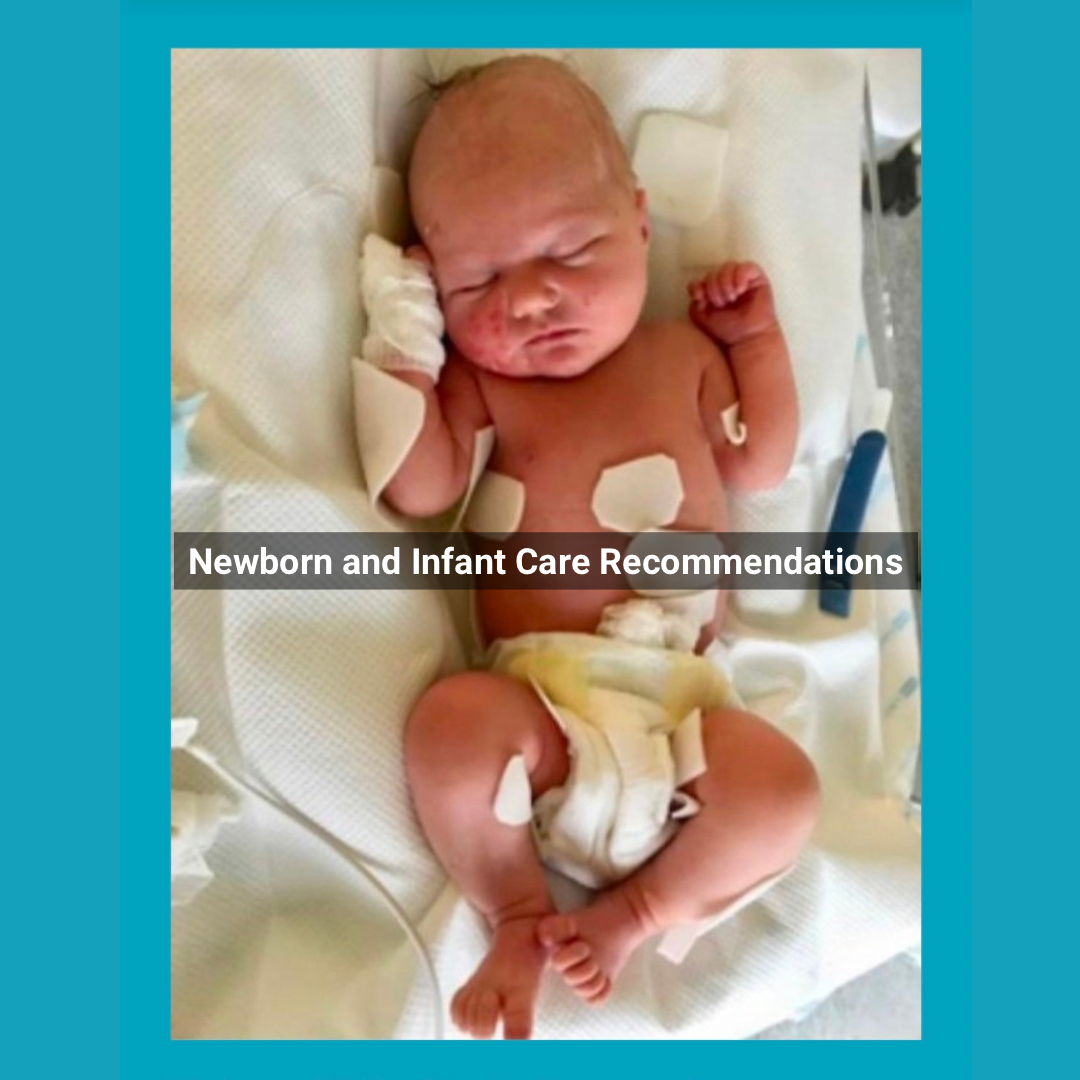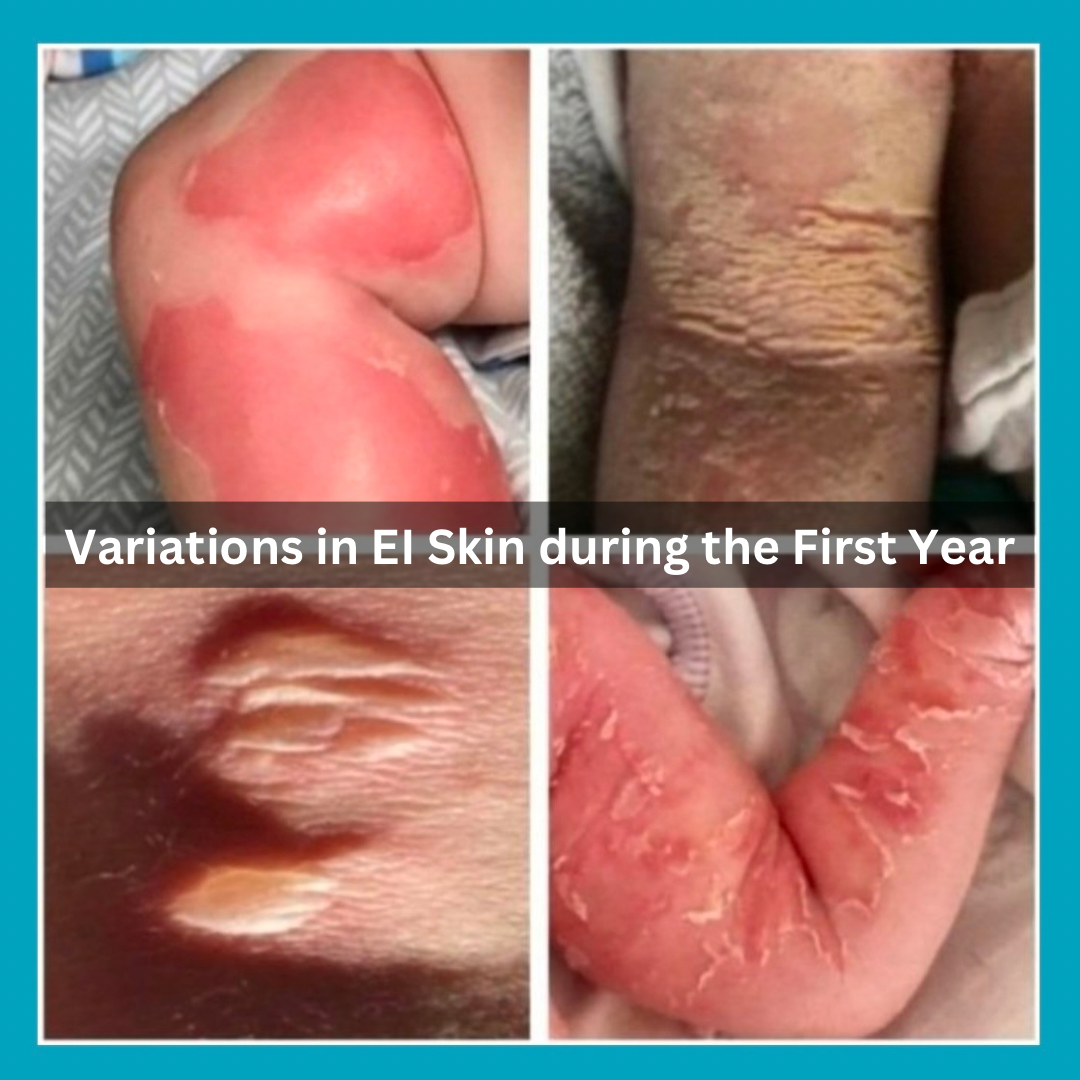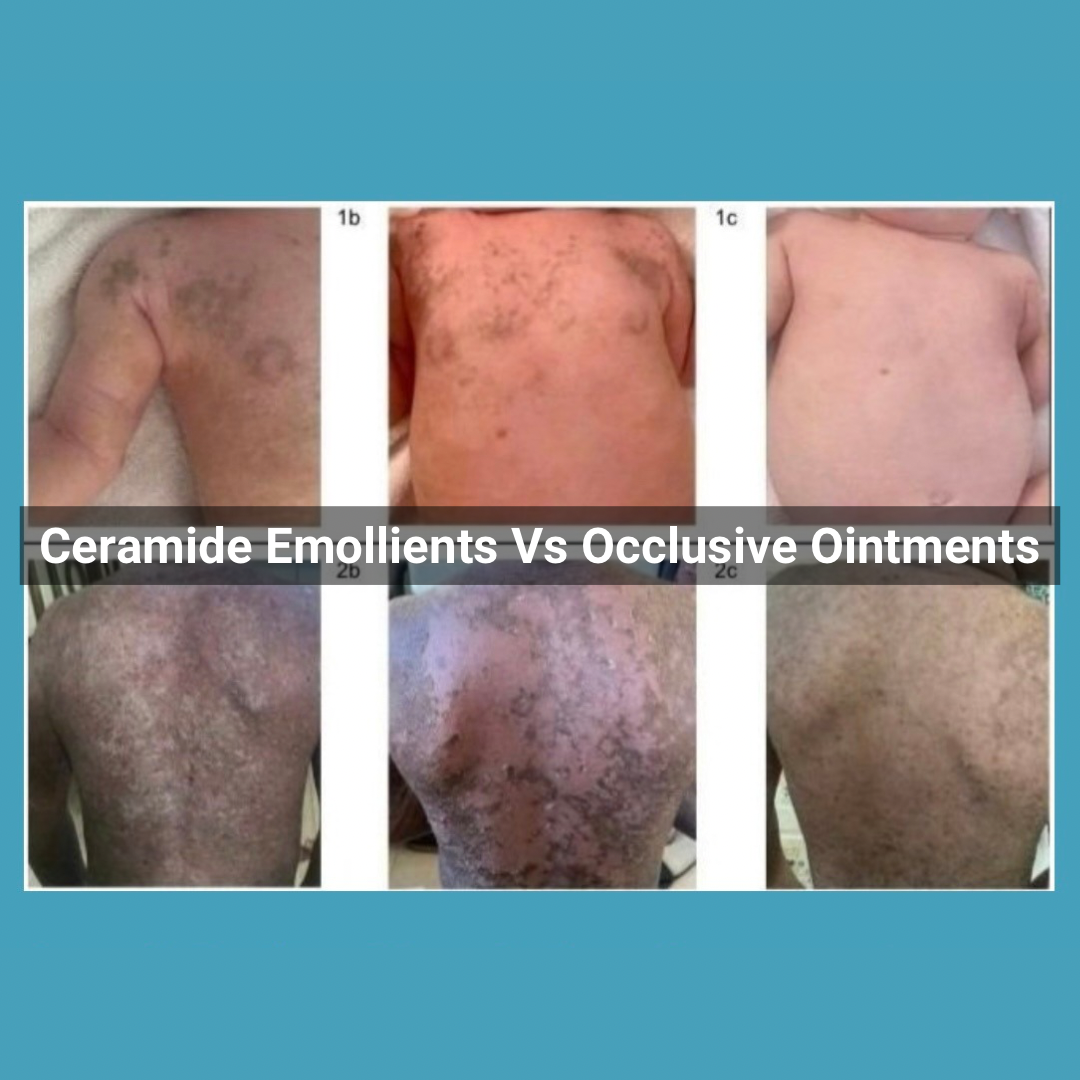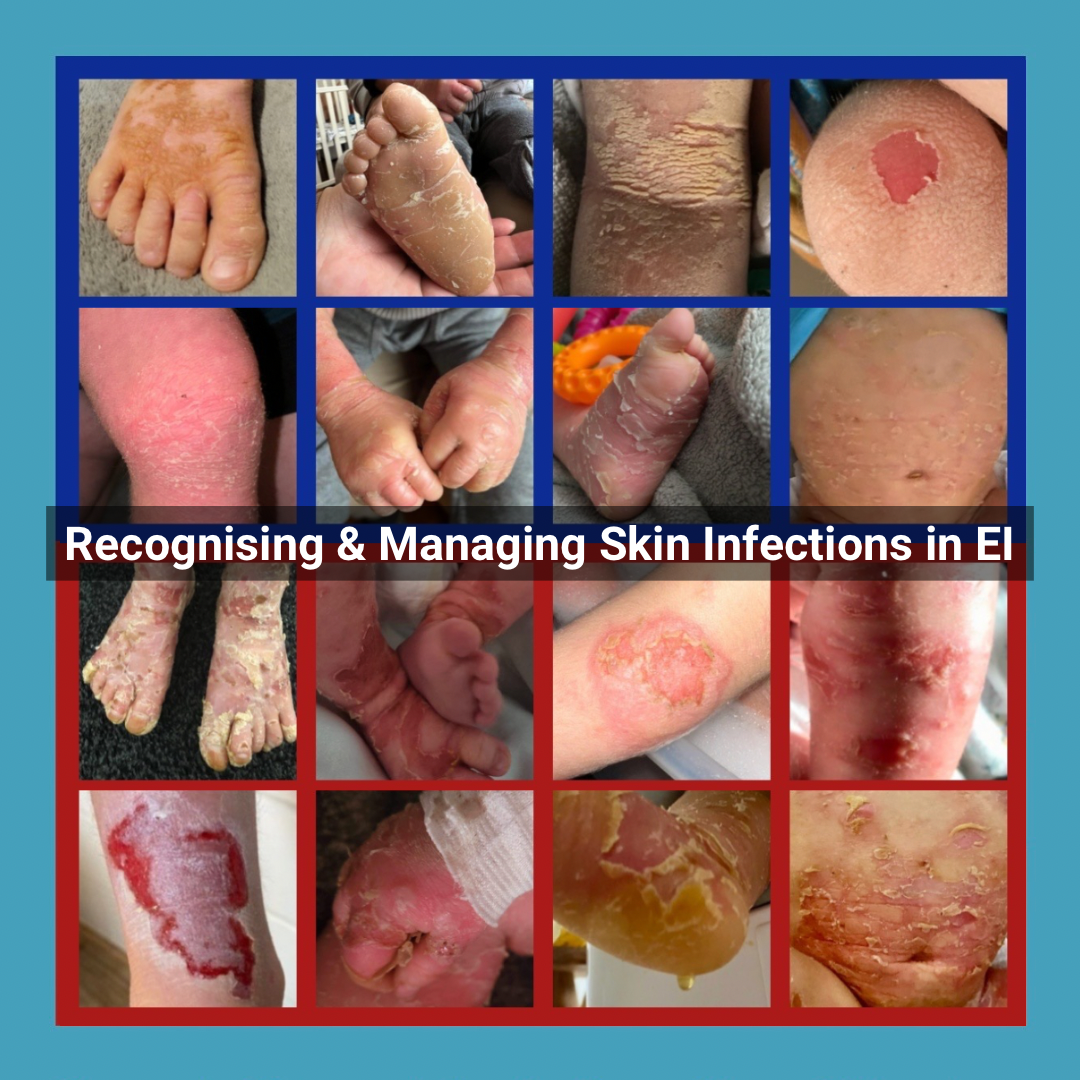Some evidence-based resources for anyone needing help with EI skin care
All resources are FREE to download, just click on the image link and use the download icon
Newborn ann Infant Care Recommendations
Potential variations in EI Skin during the First Year - Image Gallery
Rationale for EI Skincare - Ceramide Emollients Versus Occlusive Ointments
Care Recommendations for Children and Adults - ISG Family Conference 2023
Recognising and Managing Skin Infections in Epidermolytic Ichthyosis
Useful publications (EI, EB, and Ichthyosis)
(Some of these are only accessible with institutional access, but many are available for FREE to download. Copy the reference, and paste into your preferred search engine. If you can’t gain access, your dermatologist or health care provider should be able to with their hospital institutional access).
Suessmuth, K., Traupe, H., Metze, D. et al (2020) Ichthyoses in everyday practice: management of a rare group of diseases. Journal of the German Society of Dermatology: 225-243
Rout, D.,Nair, A., Gupta, A., et al (2019) Epidermolytic hyperkeratosis: clinical update. Clinical, Cosmetic and Investigational Dermatology; 12: 333-344
Diociaiuti, A., Castiglia, D., Corbeddu, M., et al (2020) First case of KRT2 Epidermolytic Nevus and Novel clinical and genetic findings in 26 Italian Patients with Keratinopathic Ichthyoses. International Journal of molecular sciences; 21: 7707
Mazereeuw-Hautier, J., Hernandez-Martin, A., O’Toole, E. (2018) Management of congenital ichthyosis: European guidelines of care - Part One. British Journal of Dermatology
Mazereeuw-Hautier, Valquist, A., Traupe, H., et al (2018) Management of congenital ichthyosis: European guidelines of care - Part Two. British Journal of Dermatology
Oji, V. and Traupe, H. (2009) Ichthyosis: clinical manifestations and practical treatment options. Am J Clin Dermatol; 10: 351-64
Fleckman, P., Newell, B., van Steensel, M., et al (2013) Topical treatment of ichthyosis. Dermatol Ther; 26: 16-25
Kim, M-R., Oji, V., Valentin, F., et al (2021) Vitamin D status in distinct types of ichthyosis: Importance of genetic type and severity of scaling. Acta Derm Venereol; 101: adv00546 doi: 10.2340/00015555-3887
Moskowitz, D., Fowler, A., Heyman, M., et al (2004) Pathophysiologic basis for growth failure in children with ichthyosis: an evaluation of cutaneous ultrastructure, epidermal permeability barrier function, and energy expenditure. J Pediatr; 145: 82-92
Fowler, A., Moskowitz, D., Wong, A., et al (2004) Nutritional status and gastrointestinal structure and function in children with ichthyosis and growth failure. J Pediatr Gastorenterol Nutr; 38: 164-9
Vahlquist, A., Gånemo, A., Virtanen, M., et al (2008) Congenital ichthyosis: an overview of current and emerging therapies. Acta Derm Venereol; 88: 4-14
Avril, M., and Riley, C. (2016) Management of Epidermolytic ichthyosis in the Newborn. Neonatal network; 35 (1)
Craiglow, B. (2013) Ichthyosis in the newborn. Semin Perinatol; 37: 26-31 (prevention of wounds, use of appropriate dressings, avoid trauma)
Denyer, J., Pillay, E., Clapham, J., et al (2017) Best practice guidelines for skin and wound care in epidermolysis bullosa: An International Consensus. Wounds International
Chamlin, S.L., Kao, J., Frieden, I.J., et al (2002) Ceramide-dominant barrier repair lipids alleviate childhood atopic dermatitis: changes in barrier function provide a sensitive indicator of disease activity. Journal of American Academic Dermatology; 47 (2): 198-208.
Hernandez-Martin, A., Aranegui, B., Martin-Santiago, A., et al (2013) A systematic review of clinical trials of treatments for the congenital ichthyoses, excluding ichthyosis vulgaris. Journal of American Academic Dermatology; 69 (4): 544-549 (e548).
Sun, Q., Ren, I.,Zaki, T., et al (2020) Ichthyosis affects mental health in adults and children: a cross-sectional study. J Am Acad Dermatology; 83 (3): 951-954
Ichthyosis Support Group - ISG (2022) Treatments and caring for ichthyosis: Are bandages useful for treating ichthyosis? Available at: https://www.ichthyosis.org.uk/Pages/FAQs/Category/treatments-and-caring-for-ichthyosis
Foundation for Ichthyosis and Related Skin Types - FIRST (2022) Types of Ichthyosis: Epidermolytic Ichthyosis, a Patient’s perspective. Available at: https://www.firstskinfoundation.org/types-of-ichthyosis/epidermolytic-ichthyosis
Loden, M. and Maibach, H.I. (1999) Dry skin and Moisturisers: Chemistry and Function. Taylor and Francis.
Buxman, M., Hickman, J., Ragsdale, W., et al (1986) Therapeutic activity of lactate 12% lotion in the treatment of ichthyosis: active versus vehicle and active versus a petrolatum cream. J Am Acad Dermatol; 15 (6): 1253-1258.
Ichthyosis Support Group - ISG (2022) What is Ichthyosis? Bullous ichthyosis (BIE, EHK, EI). Available at: https://www.ichthyosis.org.uk/Pages/FAQs/Category/what-is-ichthyosis
Carter, B. and Brunkhorst, J (2017) Neonatal pain management. Semin Perinatol; 41: 111-116 (Analgesic before care/bath)
Foundation for Ichthyosis and Related Skin Types - FIRST (2022) Skin infection in ichthyosis. Available at: https://www.firstskinfoundation.org/skin-infection-in-ichthyosis (bacterial and fungal colonisation, how to prevent/treat)
Foundation for Ichthyosis and Related Skin Types - FIRST (2022) Skin infection in ichthyosis: Prevention, Recognition, and Treatment. Available at: https://www.firstskinfoundation.org/skin-infections-in-ichthyosis-prevention-recognition-treatment
Arbuckle, H. (2010) Bathing for individuals with epidermolysis bullosa. Dermatologic clinics; 28 (2): 265-268 (Debriding wounds, saltwater baths)
Ott, H. and Grothaus, J. (2017) Red, scaly baby: a paediatric dermatological emergency. Clinical and differential diagnosis of neonatal erythroderma. Hautarzt; 68: 796-802 (Antiseptics during bathing,bacterial colonisation, antibacterial wound management, nutrition, avoid adhesives)
Peterson, B., Arbuckle, A., and Berman, S. (2015) Effectiveness of saltwater baths in the treatment of epidermolysis bullosa. Paediatric dermatology; 32 (1): 60. (Saltwater baths reduce pain and infection)
Denyer, J. (2010) Wound management for children with epidermolysis bullosa. Dermatologic Clinics; 28 (2): 257-264 (Blisters not self-limiting, saltwater baths, non-adhesive dressings)
Laimer, M., Lanschuetzer, M., Diem, A., et al (2010) Herlitz junctional epidermolysis bullosa. Dermatologic clinics; 28 (1): 55-60 (Lancing blisters, cornstarch use, reduce adhesive dressings)
Shwayder, T., and Ott, F. (1991) All about ichthyosis. Pediatr Clin North Am; 38 (4): 835-857 (bathing bicarb)
Nagoba, B., Selkar, S., Wadher, B., et al (2013) Acetic acid treatment of pseudomonas wound infections: A review. Journal of infection and public health; 6 (6): 410-415 (Antimicrobial in bath to prevent infection)
Foundation for Ichthyosis and Related Skin Types - FIRST (2022) Bathing and Exfoliation. Available at: https://www.firstskinfoundation.org/bathing-exfoliation
Nguyen, V., Cunningham, B., Eichenfield, L., et al (2007) Treatment of ichthyosiform diseases with topically applied tazarotene: risk of systemic absorption. J Am Acad Dermatol; 57: S123-125
Chiaretti, A., Schembri-Wismayer, D., Tortorolo, L., et al (1992) Salicylate intoxication using a skin ointment. Acta Paediatr Oslo Nor; 86: 330-331
Ramirez, M., Youseef, W., Romero, R., et al (2006) Acute percutaneous lactic acid poisoning in a child. Pediatr Dermatol; 23: 282-5
Germann, R., Schindera, I., Kuch, M., et al (1996) Life threatening salicylate poisoning caused by percutaneous absorption in severe ichthyosis vulgaris. Hautarzt; 47: 624-627
Madan, R., and Levitt, J. (2014) A review of toxicity from topical salicylic acid preparations. J Am Acad Dermatol; 70: 788-792
Kyle, U., Shekerdemian, L., and Coss-Bu, J (2015) Growth failure and nutrition considerations in chronic childhood wasting diseases. Nutr Clin Pract; 30: 227-38
Sethuraman, G., Sreenivas, V., Yenamandra, V., et al. (2015) Threshold levels of 25-hydroxyvitamin D and parathyroid hormone for impaired bone health in children with congenital ichthyosis and type IV and V skin. Br J Dermatol; 172: 208-14
Frascari, F., Dreyfus, I., Rodriguez, L., et al (2014) Prevalence and risk factors of vitamin D deficiency in inherited ichthyosis: a French prospective observational study performed in a reference centre. Orphanet J Rare Dis; 9: 127
Ingen-Housz-Oro, S., Boudou, P., Bergot, C., et al (2006) Evidence of a marked 25-hydroxyvitamin D deficiency in patients with congenital ichthyosis. J Eur Acad Dermatol Venereol; 20: 947-52
Milstone, L., Ellison, A., and Insogna, K. (1992) Serum parathyroid hormone level is elevated in some patients with disorders of keratinization. Arch Dermatol; 128: 926-30
Sethuraman, G., Khaitan, B., Dash, S., et al (2008) Ichthyosiform erythroderma with rickets: report of five cases. Br J Dermatol; 158: 603-606
Siracusano, M., Riccioni, A., Abate, R., et al (2020) Vitamin D deficiency and autism spectrum disorder. Curr Pharm Des; 26 (21): 2460-2474
Jia, F., Shan, L., Wang, B., et al (2018) Bench to bedside review: possible role of vitamin D in autism spectrum disorder. Psychiatry Res; 260: 360-365
Sethuraman, G., Marwaha, R., Challa, A., et al (2016) Vitamin D: A promising new therapy for congenital ichthyosis. Pediatrics; 137: 1
Ichthyosis Support Group - ISG (2022) Treatments and caring for ichthyosis: Vitamin D. Available at: https://www.ichthyosis.org.uk/Pages/FAQs/Category/treatments-and-caring-for-ichthyosis
Misra, M., Pacaud, D., Petryk, A., et al (2008) Vitamin D deficiency in children and its management: review of current knowledge and recommendations. Pediatrics; 122: 398-417
Ichthyosis Support Group - ISG (2022) Guide for parents and teachers: Problems. Available at: https://www.ichthyosis.org.uk/FAQs/guide-for-carers-and-teachers
Pigg, M., Bygum, A., Gånemo, A., et al (2016) Spectrum of autosomal recessive congenital ichthyosis in Scandinavia: clinical characteristics and novel and recurrent mutations in 132 patients. Acta Derm Venereol; 96: 932-937
Ichthyosis Support Group - ISG (2022) Palmoplantar Keratoderma (PPK) Factsheet. Available at: https://www.ichthyosis.org.uk/FAQs/palmoplantar-keratoderma-factsheet
Foundation for Ichthyosis and Related Skin Types - FIRST (2022) FIRST Mom Carleen Walsh now PhD completes Ichthyosis studies: Main findings from both studies. Available at: https://www.firstskinfoundation.org/news-details/first-mom-carleen-walsh-now-phd-completes-ichthyosis-studies
Walsh, C., Leavey, G., and McLaughlin, M. (2022) Systematic review of psychosocial needs assessment tools for caregivers of paediatric patients with dermatological conditions. BMJ Open; 12: e055777 doi: 10.1136/bmjopen-2021-055777
Walsh, C., Leavey, G., McLaughlin, M., et al (2022) A novel mixed-method, inclusive protocol involving global key stakeholders, including carers as experts, to co-develop relevant Caregiver Reported Outcome Domains (CRODs) in skin disease. BMJ Open, doi: 10.1136/bmjopen-2022-068893
Gilbert, L (2013) Rare disease Care Coordination: Delivering Value, Improving Services. Rare Disease UK. Available at: https://www.raredisease.org.uk/media/1639/rduk-care-coordinator-report.pdf
European Commission Expert Group on Rare Diseases (2016) Recommendations to support the incorporation of rare diseases into social services and policies. https://ec.europa.eu/health/system/files/2016-11/recommendations_socialservices_policies_en_0.pdf





